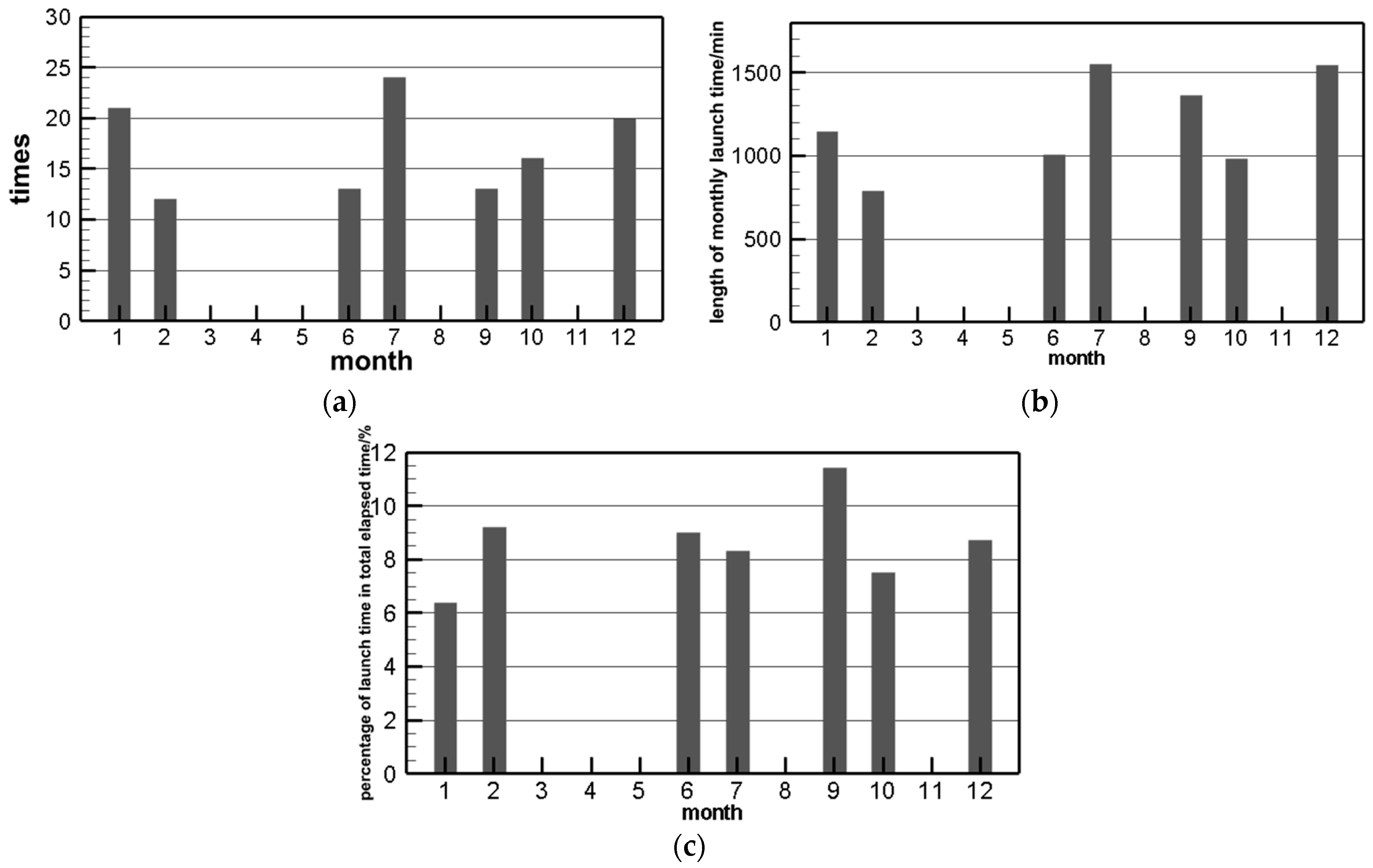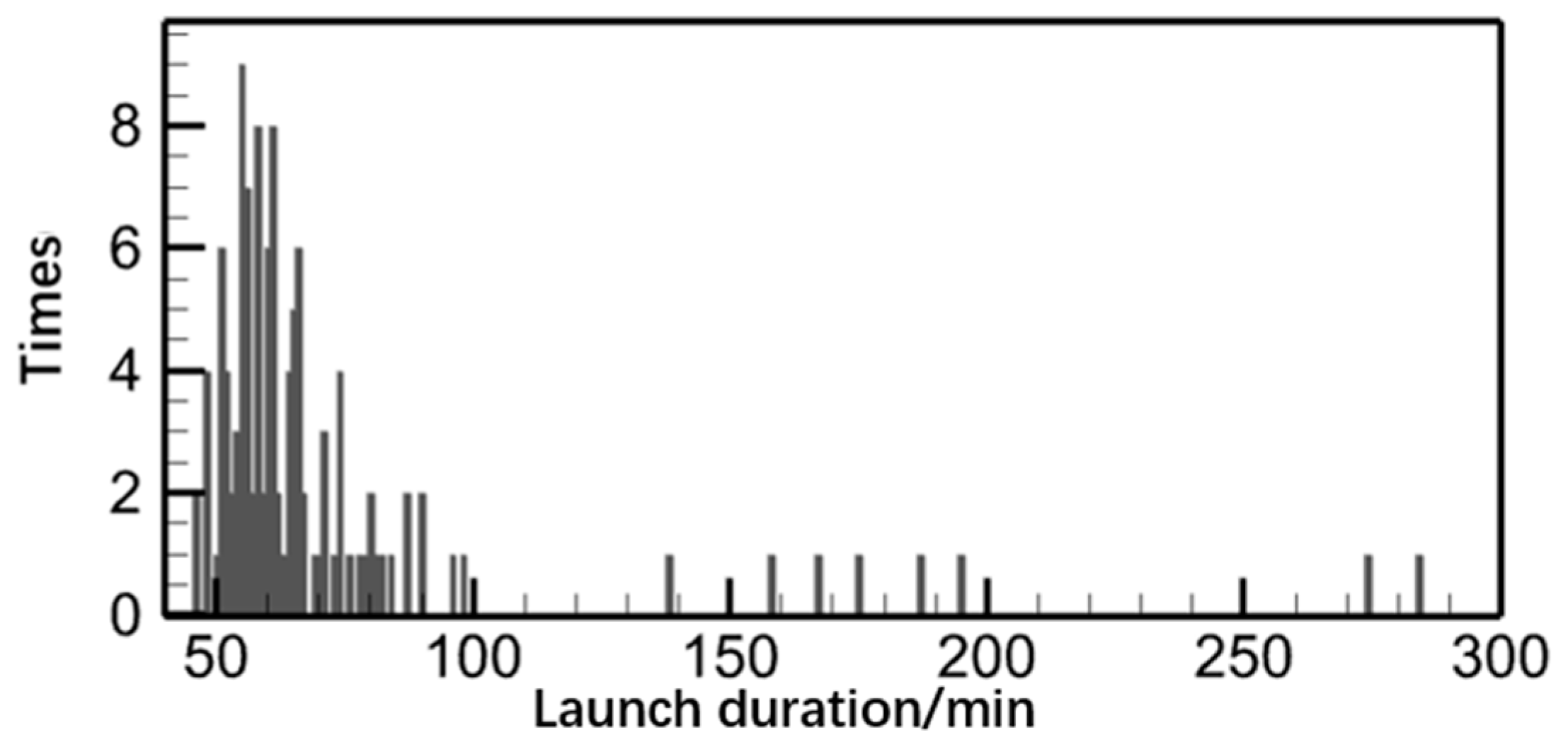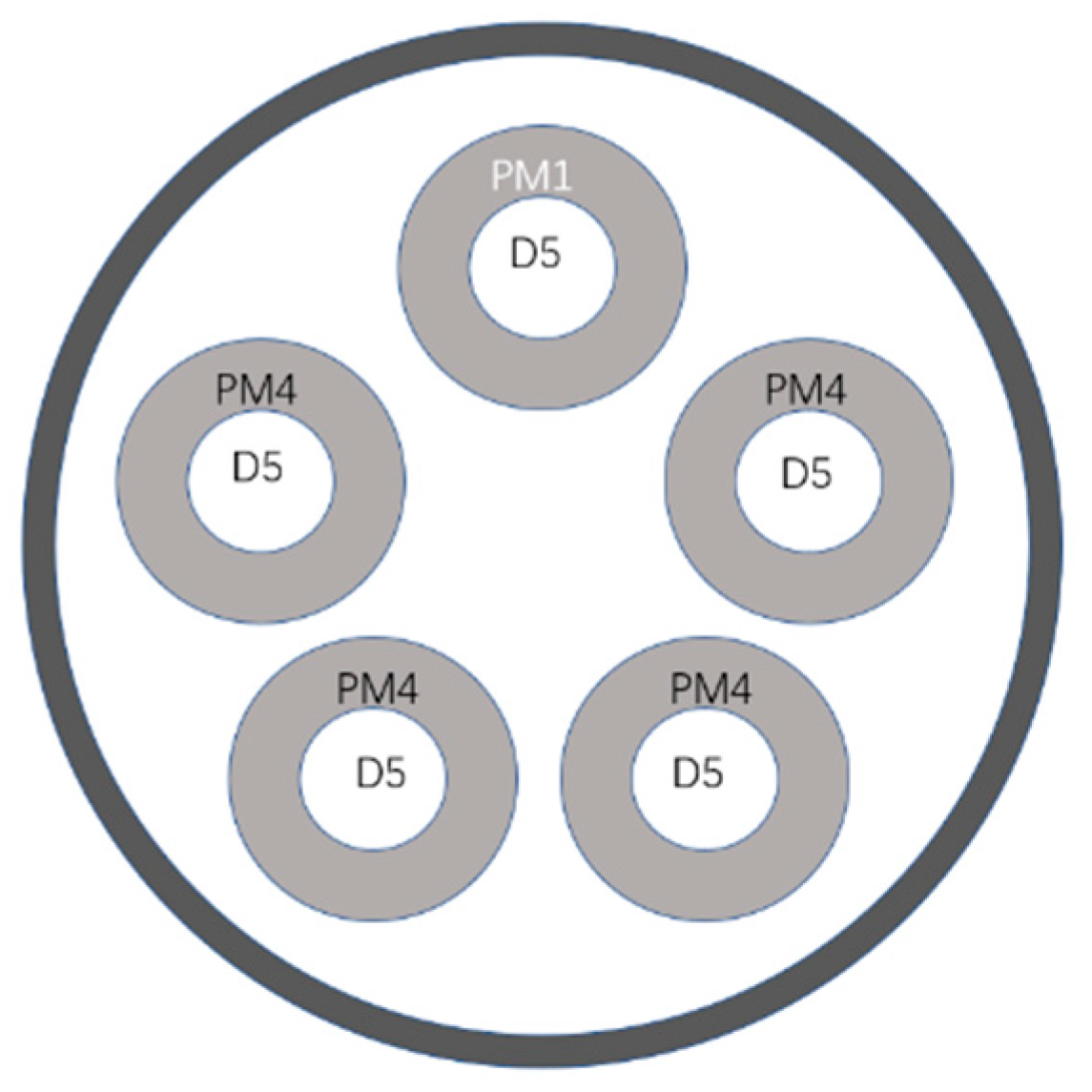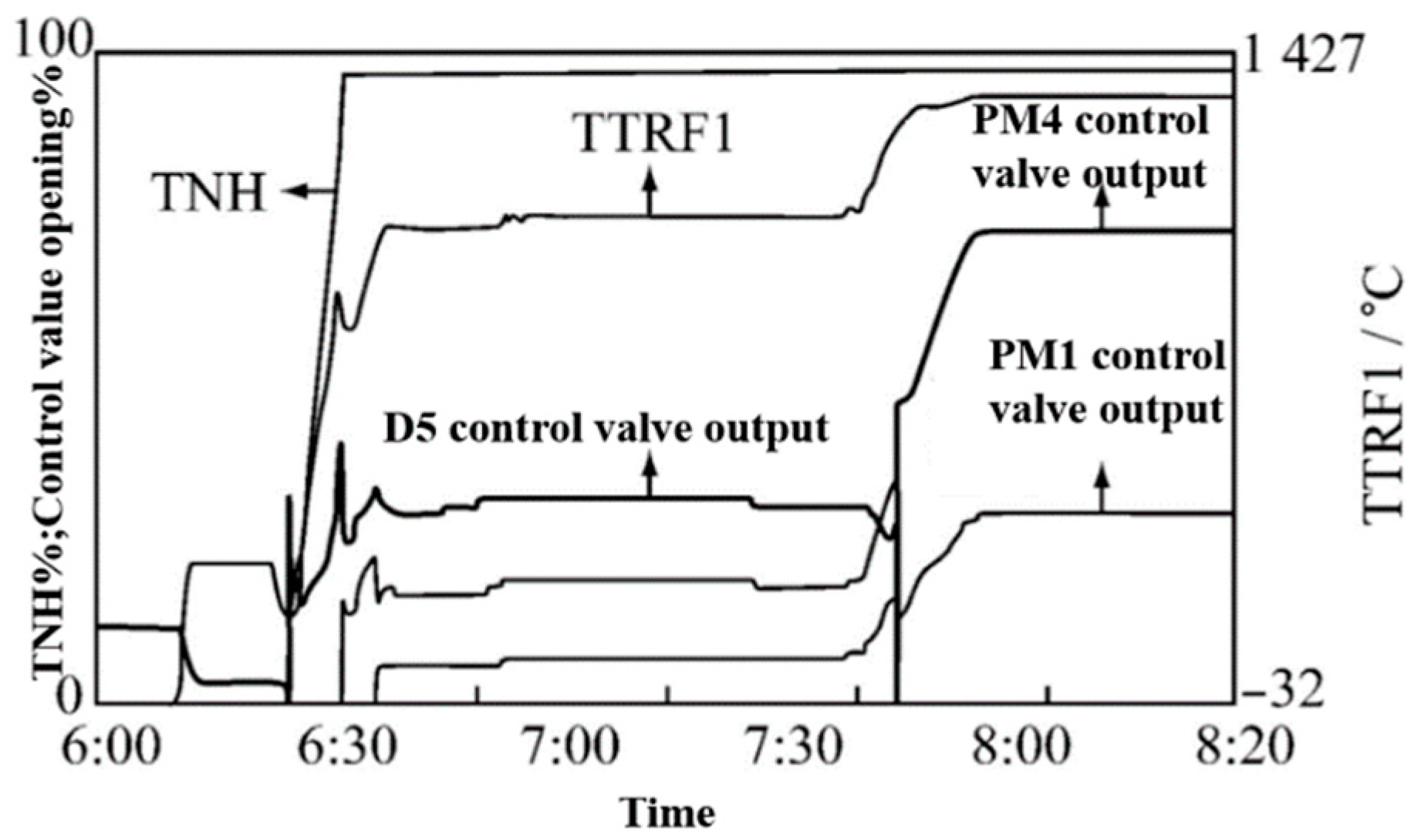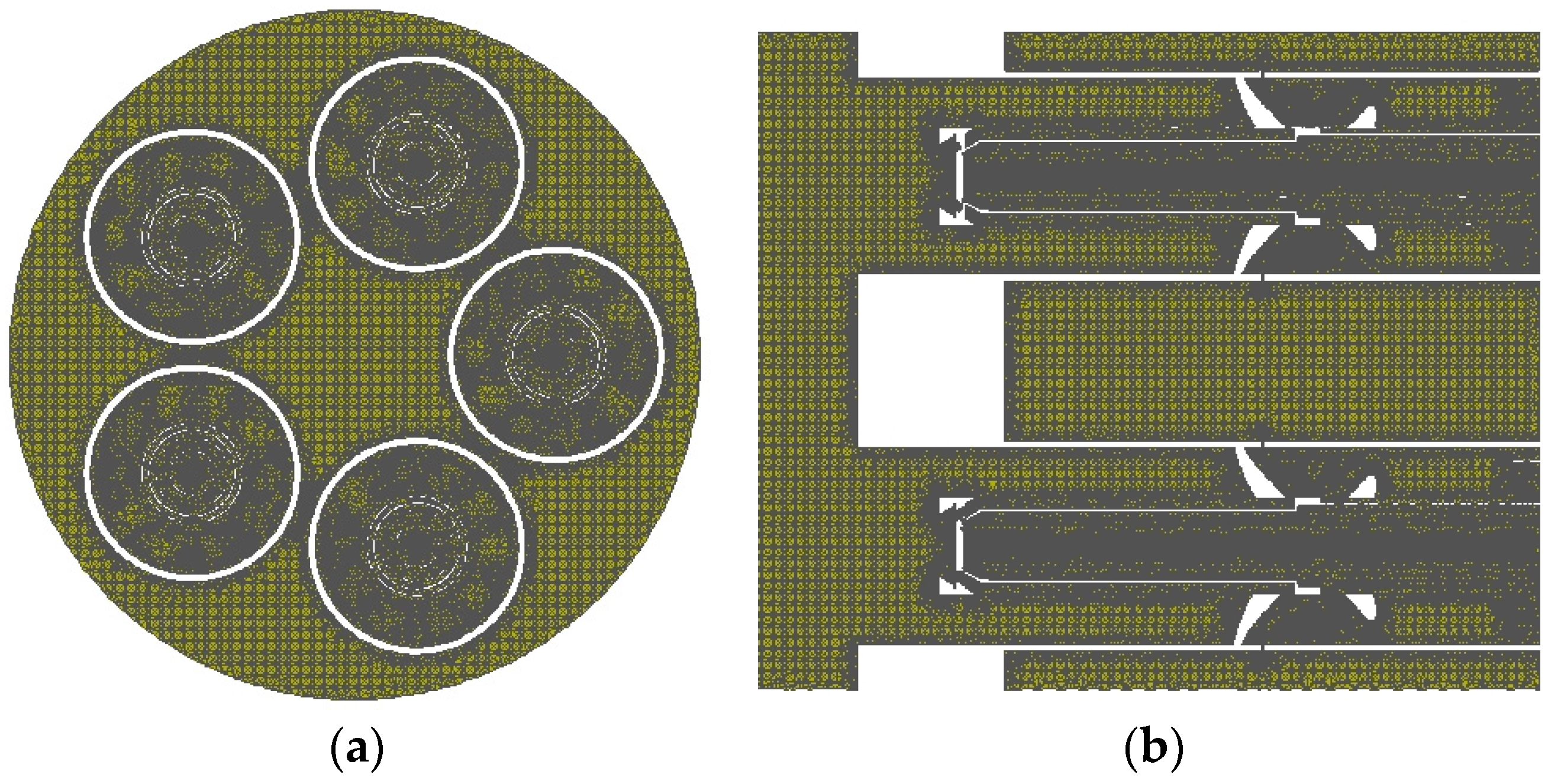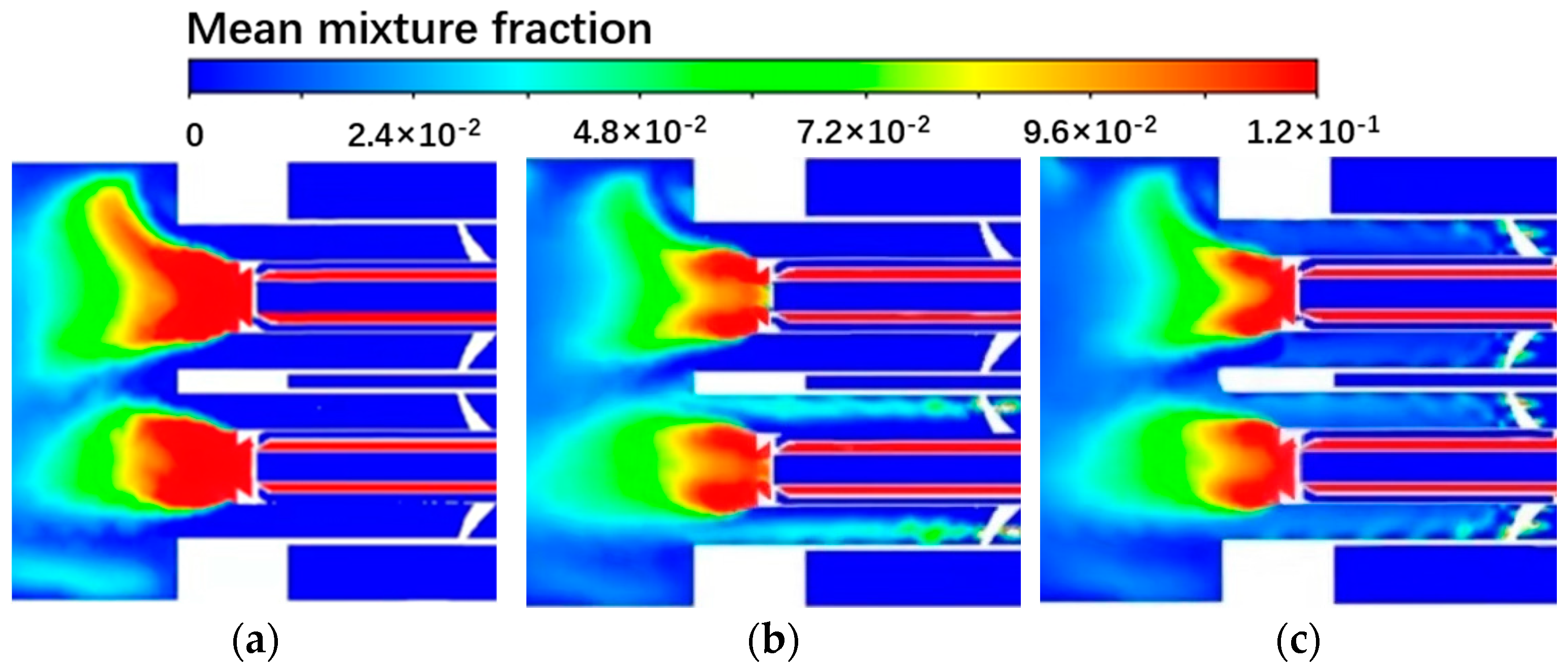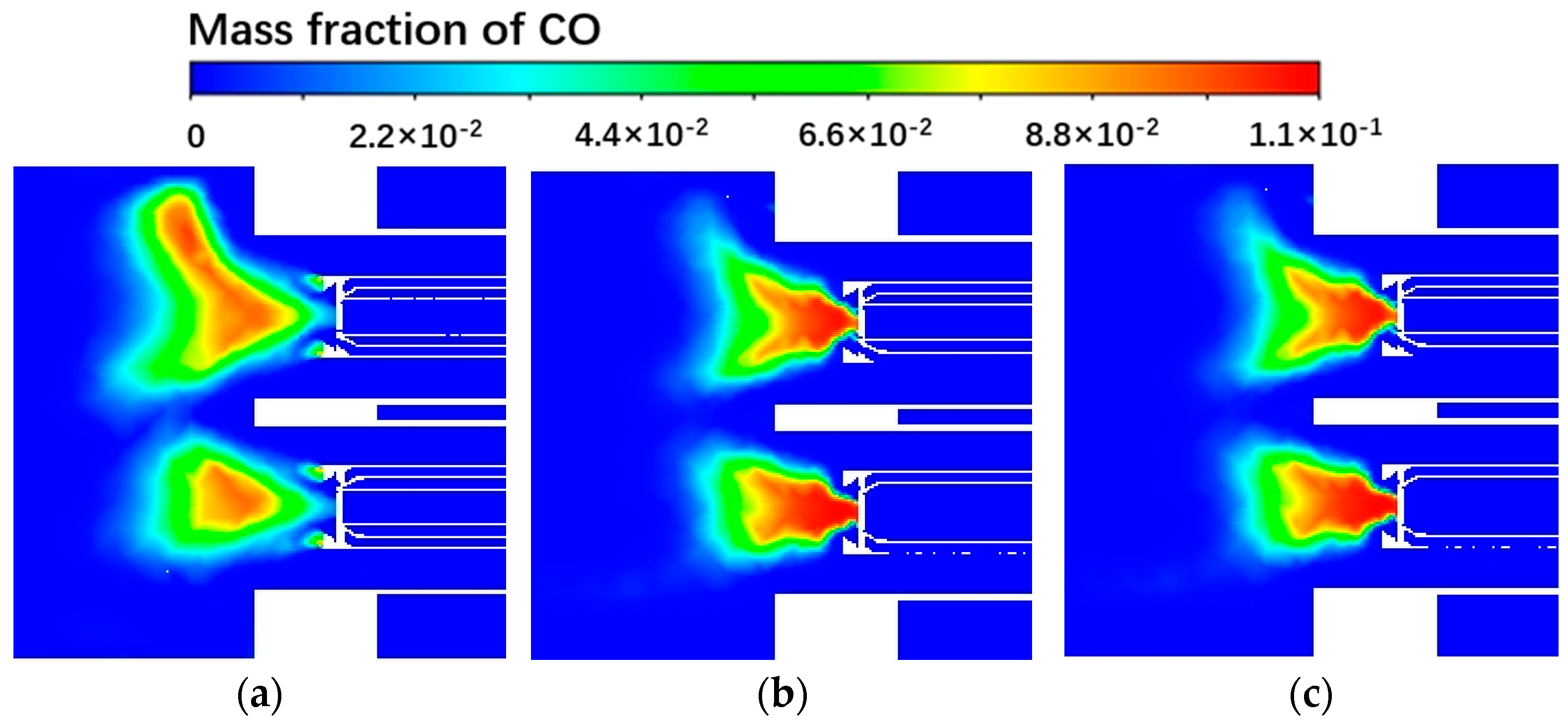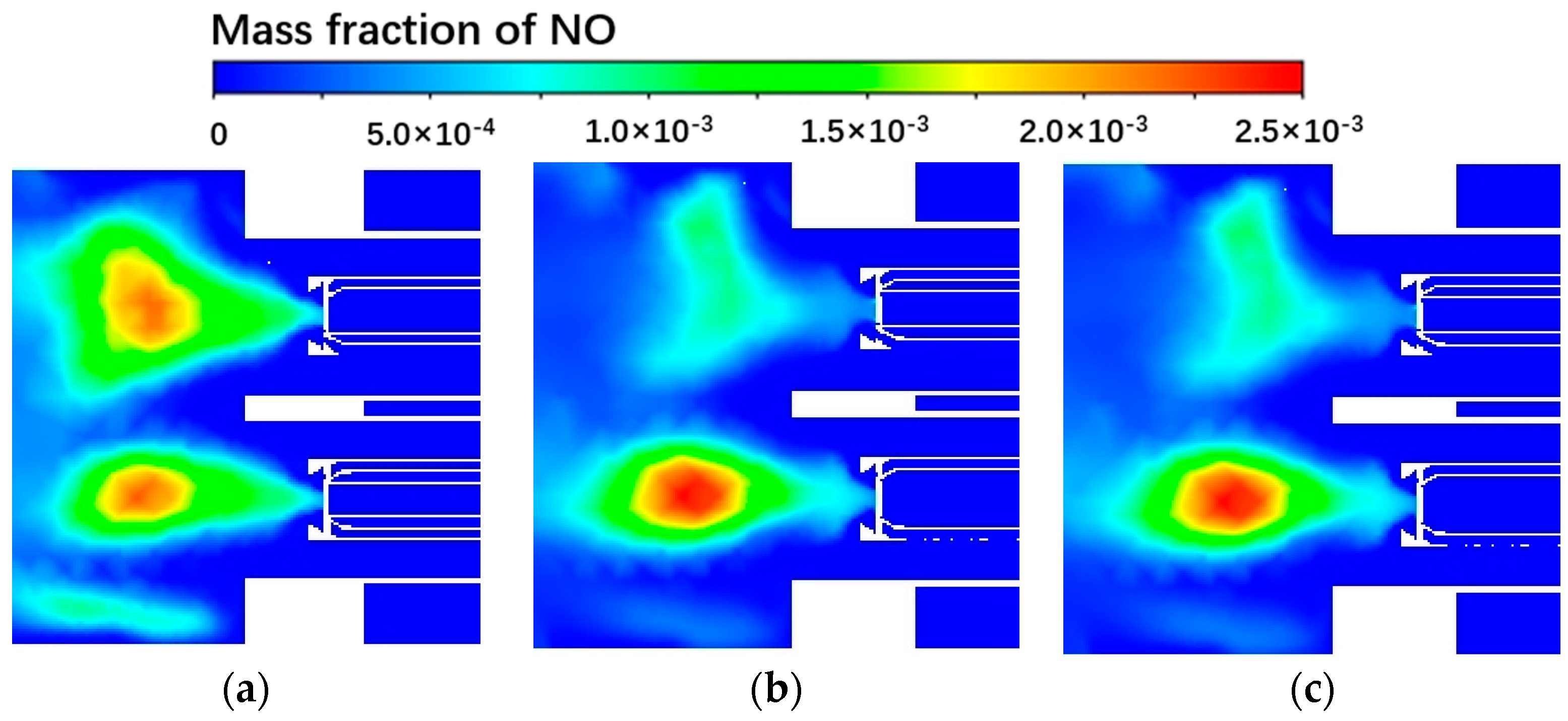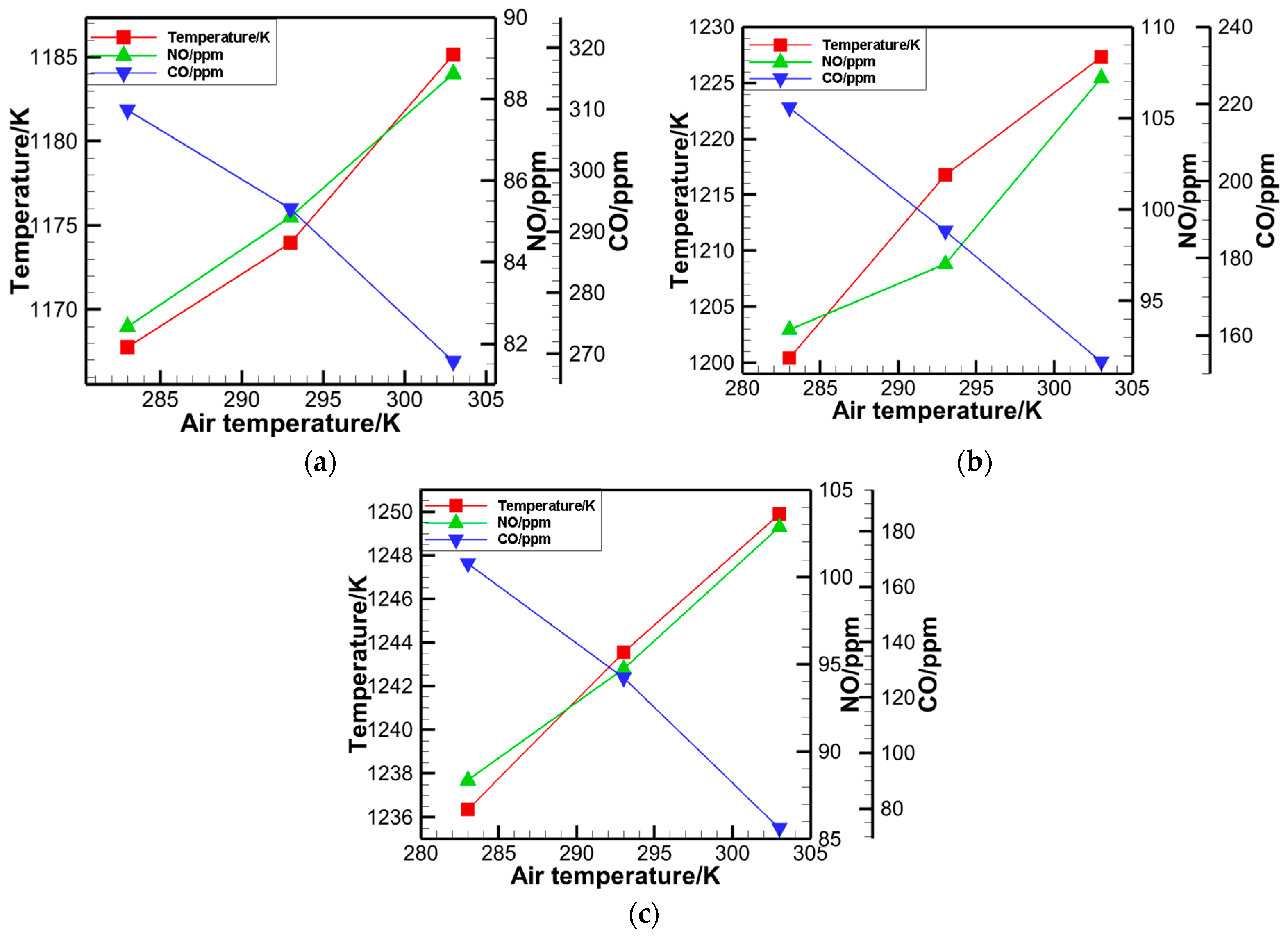In recent years, the gas power generation industry in China entered a stage of rapid development. Gas–steam combined cycle units have become an important part of China’s energy utilization [
1]. Due to the increasingly strict environmental standards, the NOx emission standard in flue gas is extremely low. To reduce flame temperature and avoid high temperature spots, lean premixed combustion technology was applied to modern gas turbines. Some units even sell out of combined flue to reduce NOx emissions [
2,
3]. However, the gas turbine engine is prone to Combustion Instability (CI), which leads to dangerous oscillation. As a result, gas turbines typically operate within a very small range of an equivalence ratio, to avoid the Lean Blow-off Limit (LBO) and CI [
4,
5,
6,
7]. However, the ignition of a gas turbine cannot be successfully achieved under such an equivalence ratio. The diffusion mode should be adopted to gradually transition to the premix mode to ensure the avoidance of blow-out and CI phenomena in the start stage of ignition. A DLN2.0+ combustor is a parallel staged premixed combustor produced by GE, which is widely used in F-class gas turbine units. Early gas turbines used the method of injecting steam or water to reduce the temperature of the combustion area. The DLN combustor uses air as diluent to mix fuel and excess air in advance and burns them in the combustion process, so as to control the combustion temperature. Different DLN combustion chambers have different fuel distribution and operation modes, as the DLN2.0+ combustor is one in a series. Taking a DLN2.0+ gas turbine as an example, from startup to stable working conditions, it required three startup combustion modes (it will be introduced in detail in the following chapters), namely the diffusion mode, sub-pilot premix mode, pilot premix mode, and finally it enters the normal premix mode [
8]. The three modes all have diffusion combustion types. In order to ensure the stability of gas turbine startup, a fuel-rich combustion zone exists behind the PM1 jet in the sub-pilot premix and pilot premix modes. This also results in higher NOx emissions during startup than during typical load operation. The typical startup process of a DLN2.0+ gas turbine usually lasts more than one hour, and the equivalent ratio provided by the gas turbine manufacturer at this stage is conservative, so as to ensure the successful ignition and continuous combustion of the gas turbine without excessive consideration of emission indicators. The diffusion combustion mode inevitably results in the appearance of a high temperature zone, with NOx exceeding the standards outlined in the combustion chamber. In fact, since gas turbine power stations are usually used for peak shaving, the annual start and stop frequency is high, so the level of NOx emission in the startup process is considerable. Because the flue gas post-treatment in the startup stage usually does not work normally, or because some units may not include post-treatment systems, the NOx emissions in this part are not conducive to pollution control. The NOx emission of a DLN2.0+ combustor can be controlled at 10–25 ppm during high load operation, while NOx emissions in the startup stage can even exceed 100 ppm. The NOx emission standard of Beijing and Jiangsu in China is 15 ppm, and the emission level in the startup stage is much higher than this standard, which is a major challenge for environmental protection. Before replacing existing gas turbines with more advanced equipment, existing equipment needs to be improved to meet current pollution standards.
In the process of gas turbine operation, NOx is mainly emitted in the form of thermal NOx [
9,
10,
11], which has an exponential relationship with the temperature of the combustion zone. The lean combustion premix combustion structure was adopted to make the equivalent ratio deviate from the stoichiometric equivalence ratio, and reduce the combustion temperature and local high temperature hot spots, thus greatly reducing the NOx index. Therefore, the main measures to achieve the low emissions of gas turbines are combustion organization and combustion optimization. As the design and manufacture of gas turbines is also a long-term strategic goal of China, a variety of domestic studies on the combustion organization of gas turbines have been published [
12,
13]. However, most of them focus on low-nitrogen emission combustion adjustment technologies under normal working conditions. For example, at present, according to the operating conditions of a gas turbine combustor, the thermodynamic conditions, chemical dynamics characteristics and flow conditions of soft combustion have been studied, and the soft combustion has been realized in the model combustion chamber [
14]. Xiao Junfeng et al. [
15,
16,
17] conducted a series of numerical simulation studies on gas turbines concerning the influence of air moisture content, atmospheric temperature and intake pressure on the combustion effect of a gas turbine, etc. In the early stages of research, a number of studies on pollutant emissions and the pollutant discharge of DLN gas turbines were reported [
18,
19,
20], but the current studies on lean oil premixed combustors mainly focus on combustion stability, including the important influencing factors [
21] and control methods [
22,
23,
24]. Research on flame shape changes in a premixed combustor under an oscillation state is also popular [
25,
26]. Mitchell Cohen [
27] introduced the adjustment and maintenance strategy of a DLN burner, and Min Chul Lee [
28] adopted the six Sigma method for time management and other adjustment strategies for NOx emissions in the combustion process. However, Chikushev et al. [
29] pointed out that at present, most studies on the combustion adjustment process and combustion focus on the design condition and normal load, and there are relatively few studies concerned with NOx emissions in the startup stage. NOx emission characteristics and adjustment strategies in the startup stage have not yet been reported. In the startup stage, diffused combustion and a fuel-rich premix mode are important components, hence the zone of an extremely high local temperature. The high concentration of NOx generated in the local high temperature region is not consumed in the subsequent reaction, but enters the subsequent stages and is finally discharged into the atmosphere.
In order to evaluate and analyze the emission characteristics and influencing factors of NOx emissions during the startup stage of a gas turbine, the numerical simulation method was adopted in this paper to estimate the Nox emissions during the startup period of a DLN2.0+ gas turbine unit in one year. The influence of atmospheric conditions on gas turbine emissions during the startup process was analyzed to provide data and a basis for the optimization and adjustment of gas turbines during the startup process.
